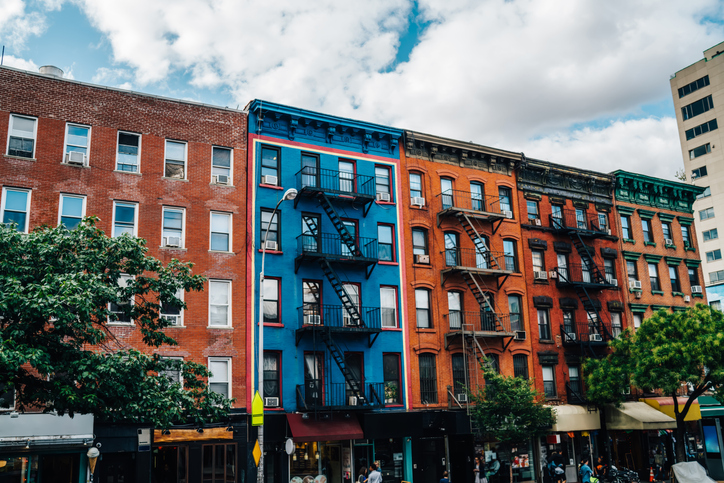We conclude our review of legal issues arising upon the conversion of commercial buildings to residential use. In this, the third and final article in our series, our commercial property partner Richard Higgs considers the ‘leasehold enfranchisement’ aspects.
In our first article, we considered the regime of ‘permitted development’ (PD) rights, which forms the legal basis for the widespread trend towards the conversion of commercial buildings to residential use. In the second article, we went on to consider ‘landlord and tenant’ related issues which can arise when undertaking a commercial to residential conversion using PD rights. In this final article, we will consider how the leasehold enfranchisement regime touches upon residential conversions and the pitfalls to avoid.
There are three main aspects of leasehold enfranchisement law which need to be considered. These are:
- Chapter 1 of the Leasehold Reform, Housing and Urban Development Act 1993 (LRHUDA) – collective enfranchisement.
- Chapter 2 of LRHUDA – the right to a 90-year lease extension.
- Rights of First Refusal under the Landlord and Tenant Act 1987 (LTA).
Chapter 1 of LRHUDA
Outline of provisions
This provides for a right of collective enfranchisement – that is, the acquisition of the freehold by the tenants of a block of flats. The right is exercisable by not less than two-thirds of qualifying tenants.
A ‘qualifying tenant’ is a tenant of a lease of a flat for more than 21 years. The tenant under a head lease of a whole building is a qualifying tenant of any flats not sublet on long leases. However, if a person (which includes associated companies) owns 3 or more flats, he is not a qualifying tenant of any of the flats.
Additionally, enfranchisement under Chapter 1 is not available where more than 25% of the building (excluding the common parts) is not occupied or intended to be occupied for residential purposes.
What are the issues?
For developers who own the freehold:
Once two-thirds of the flats in a development are let on qualifying tenancies, there is a risk of enfranchisement under Chapter 1. (An agreement for lease qualifies as a lease for these purposes.) This means that a developer can potentially lose control of the development once 7/10 flats have been let or contracts have been exchanged.
It is important to note that a flat can be a flat before it is habitable or fitted out. In the 2018 case of Aldford House Freehold Ltd v Grosvenor (Mayfair) Estate and another it was held that a ‘flat’ can come into being as soon as a separate set of premises comes into being which is intended to be occupied as a flat, whether or not it is fitted out.
It is therefore necessary to consider taking measures to avoid Chapter 1 rights from inadvertently arising. Ensuring that more than 25% of the development is non-residential would be one way of avoiding rights arising. Alternatively, the developer could consider retaining at least one-third of the flats for letting on assured shorthold tenancies or as serviced apartments.
For developers who have a leasehold interest:
The leasehold owner may be a qualifying tenant of flats which are not let (there is no need for a separate lease of each flat). But, if he is the tenant (or an associate company is tenant) of 3 or more flats, he is not a qualifying tenant of any of them. He will want to try to arrange things to allow himself a collective enfranchisement claim.
In order to circumvent the 3 or more flats limitation, it is possible to put flats into a corporate SPV scheme (called a ‘Dolphin Square’ type scheme after the case of Westbrook Dolphin Square Ltd v Friends Life Ltd (2014)), where the sub-tenants are not associated companies.
Chapter 2 of LRHUDA
Outline of provisions
Chapter 2 gives a qualifying tenant the right to a 90-year lease extension. This is available to a tenant of a flat who has been a qualifying tenant of it for at least 2 years. In this instance, there is no limit on the number of flats the tenant may own in the building.
What are the issues?
Since there is no limit on the number of flats that a qualifying tenant has – who could be a developer with a leasehold interest – the lessee/developer can apply for lease extensions for as many flat as it holds.
The question of when a 90 year lease extension can be claimed arises: does the clock start to run from the date when the lessee/developer has owned the lease of the building (i.e., before its conversion into flats) or does time only start to run once a conversion has taken place? Currently, there is no case authority on this point…
Rights of First Refusal under LTA
Outline of provisions
The Landlord and Tenant Act 1987 gives qualifying tenants the right of first refusal before the landlord makes a relevant disposal. This applies where the building has 2 or more flats held by qualifying tenants and the number of flats held by such tenants exceeds 50% of the flats contained in the building.
The definition of ‘qualifying tenant’ is broader than under LRHUDA as it includes tenancies at will or leases of any length which are not assured tenancies or assured shorthold tenancies. A ‘relevant disposal’ excludes the disposal of a single flat.
What are the issues?
A freeholder will usually want to sell long leases with a ground rent and then sell the reversion. Under the LTA, it may be necessary to offer a right of first refusal to the tenants.
A developer wishing to structure matters in such a way as to avoid having to make an offer to tenants under the LTA could consider:
- Setting up and retaining associated companies to which disposal can be made after 2 years. The shares in the companies could be sold, if required.
- Granting a headlease of the whole building to an associated company from the outset. The freehold could then be sold to a third party without offering it to the qualifying tenants, as the owner of the freehold is not the immediate landlord of the qualifying tenants.
Conclusion
There are a number of potential pitfalls as well as opportunities afforded by the leasehold enfranchisement regime to be considered when structuring the conversion of office accommodation to residential. It is recommended that developers (or potential developers) take appropriate advice specific to the circumstances to avoid unwarily falling into enfranchisement traps, as well as to make greatest use of the available statutory rights.

